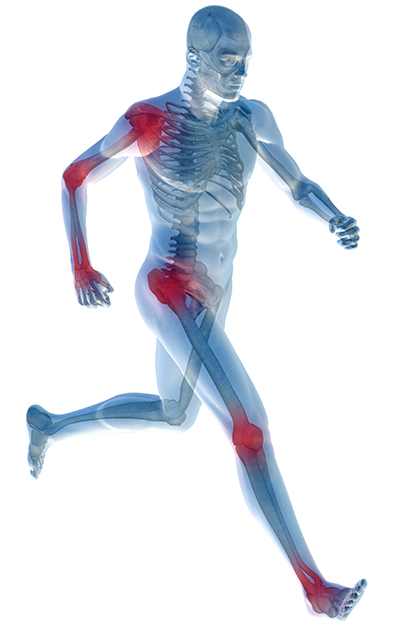 Pain Management and Sports Medicine
Pain Management and Sports Medicine
All-Natural, Drug Free
“Aid the body to naturally heal, treat the cause of acute and chronic pain by repairing structural and functional damage and to avoid surgery or other more aggressive interventions.”
Dr. Anderson’s patient PRP treatment goals are to stop reliance on medications, enhance quality of life and increase longevity. PRP is a SAFE, and a long term SOLUTION.
Many sports medicine and chronic pain patients are taking daily over the counter daily pain medications, narcotics, and having steroid injections. My goal is to eliminate narcotics (Percocet, Norco, MsContin), decrease the use of NSAIDS (Aleve, Tylenol, Advil, Celebrex), and avoid steroids (Kenalog, Prednisolone). All these medications have serious side effects.
NSAIDs (naproxen, acetaminophen, ibuprofen, mobic) are known to cause liver, kidney failure, analgesic headache and can make pain worse with regular use.
Narcotics (oxycodone, hydrocodone, morphine, fentanyl) have abuse issues, respiratory depression leading to death, allergic reactions, drug headaches, liver failure, and constipation.
Steroid injections may DAMAGE ligaments and tendons, erode bone, cause muscles to not work (steroid induced myopathy), cut off the blood flow and cause the joint to die (avascular necrosis).
Oral steroids (prednisone) also causes Cushing’s syndrome with fat changes to the face and “buffalo hump” in neck area, pigment problems, significant weight gain, diabetes.
Common and expected side effects of PRP are soreness and inflammation at injection site shortly after procedure. It can last several days. This is from the body’s repairing mechanisms being activated and enhanced.
AVOID treating the soreness and mild pain after injections with NSAIDS such as Ibuprofen, Naproxen, and Celebrex. This inflammation response is caused by stem cells and growth factors repairing damaged tissue. The NSAIDs will stop PRP from working. You CAN treat soreness with Tylenol (acetaminophen). Tylenol won’t interfere with the PRP body repair process although some patients should not take Tylenol.
*NOTE: Each patient is unique and needs to be EVALUATED at a CONSULT appointment BEFORE a PRP procedure.
As a physician, Dr. Anderson must examine her patients, know their medical history, see what are the underlying causes, and treat appropriately. This is to give you the best care. For example, she has had to send patients to orthopedics for injuries that could not be corrected with PRP, neurosurgery for cord compression (pending paralysis), and endocrinology for thyroid issues because the source of injury and pain was undiagnosed. Patients with certain cancers, on blood thinners, have chronic infections may be poor candidates for PRP. Acute full thickness tears may need surgery first and then PRP to facilitate healing.
How Does it Work?
PRP injections are performed in the office using a sterile technique. A small sample of blood is drawn from the patient and spun in a centrifuge machine. The centrifuge separates the platelets from the rest of the blood. The platelets are then injected into the injured area. Dr. Anderson may recommend a single injection or a series of injections depending on the injury. After the injection patients may experience temporary soreness or discomfort which is normal. Most patients participate in a course of physical therapy following the injections.
Who Should Consider PRP?
Dr. Anderson uses PRP injections to treat a variety of injuries. These include: ligament sprains (UCL of the elbow, MCL of the knee), epicondylitis of the elbow, muscle strains (calf, quadriceps, hamstring), and arthritis of the knee, among others. PRP treatment is highly specialized and individualized. Based on the examination Dr. Anderson can determine if PRP is an appropriate treatment option and the team will make a plan with each patient based on their injury and management needs.
Articles:
Is PRP Therapy, Used by Alex Rodriguez and Zack Greinke, Miracle or Mirage?
A Promising Treatment for Athletes, in Blood – NYTimes.com
